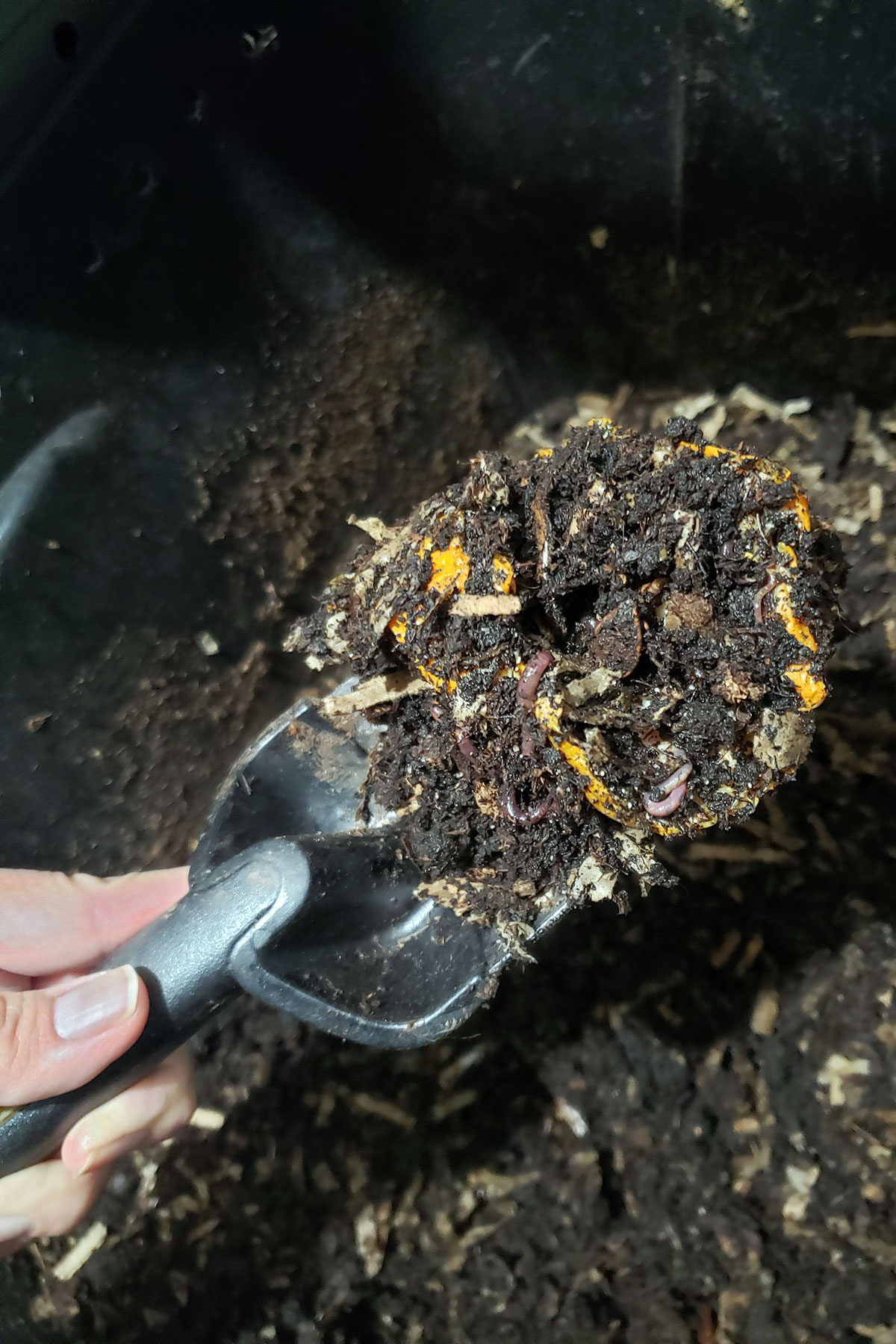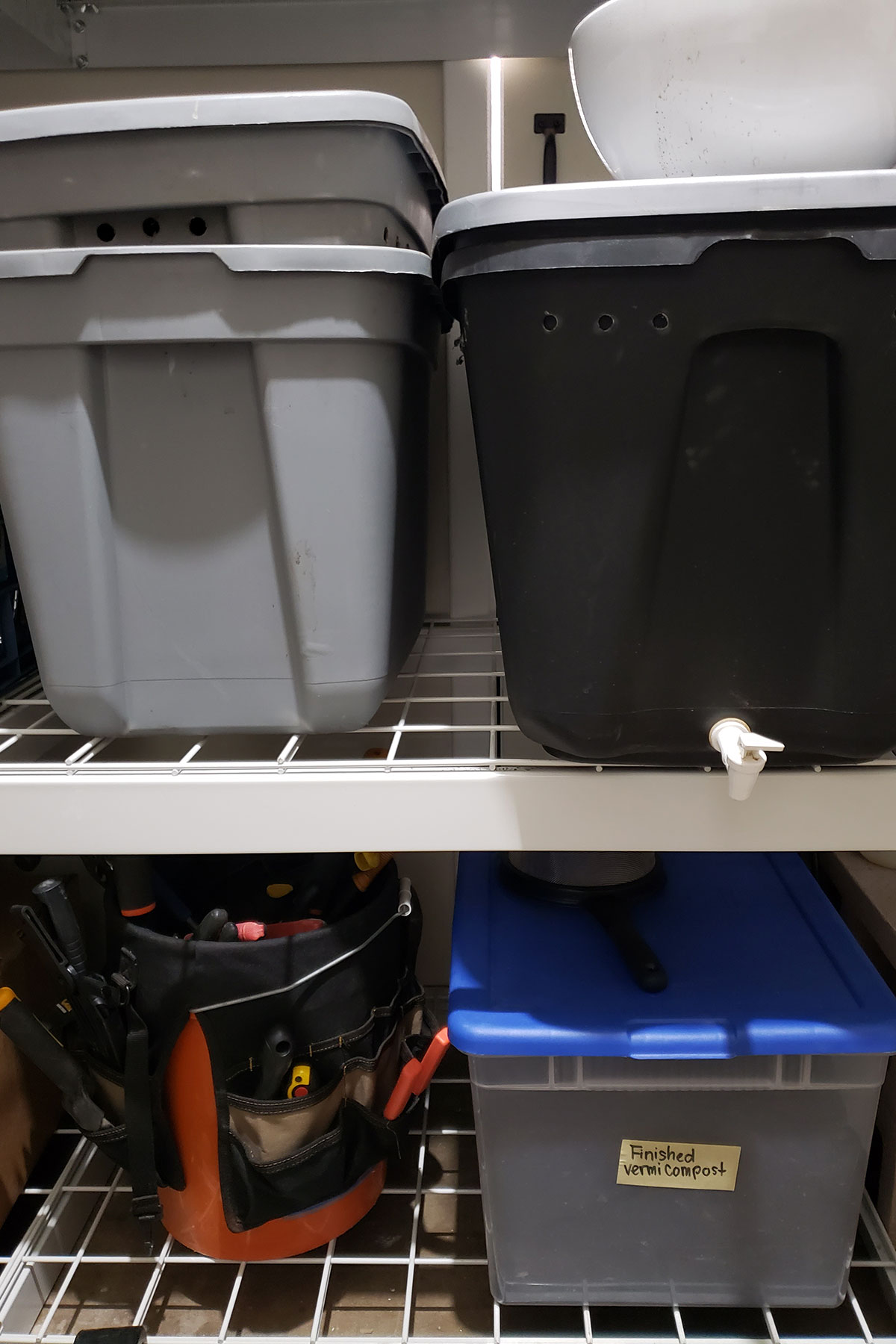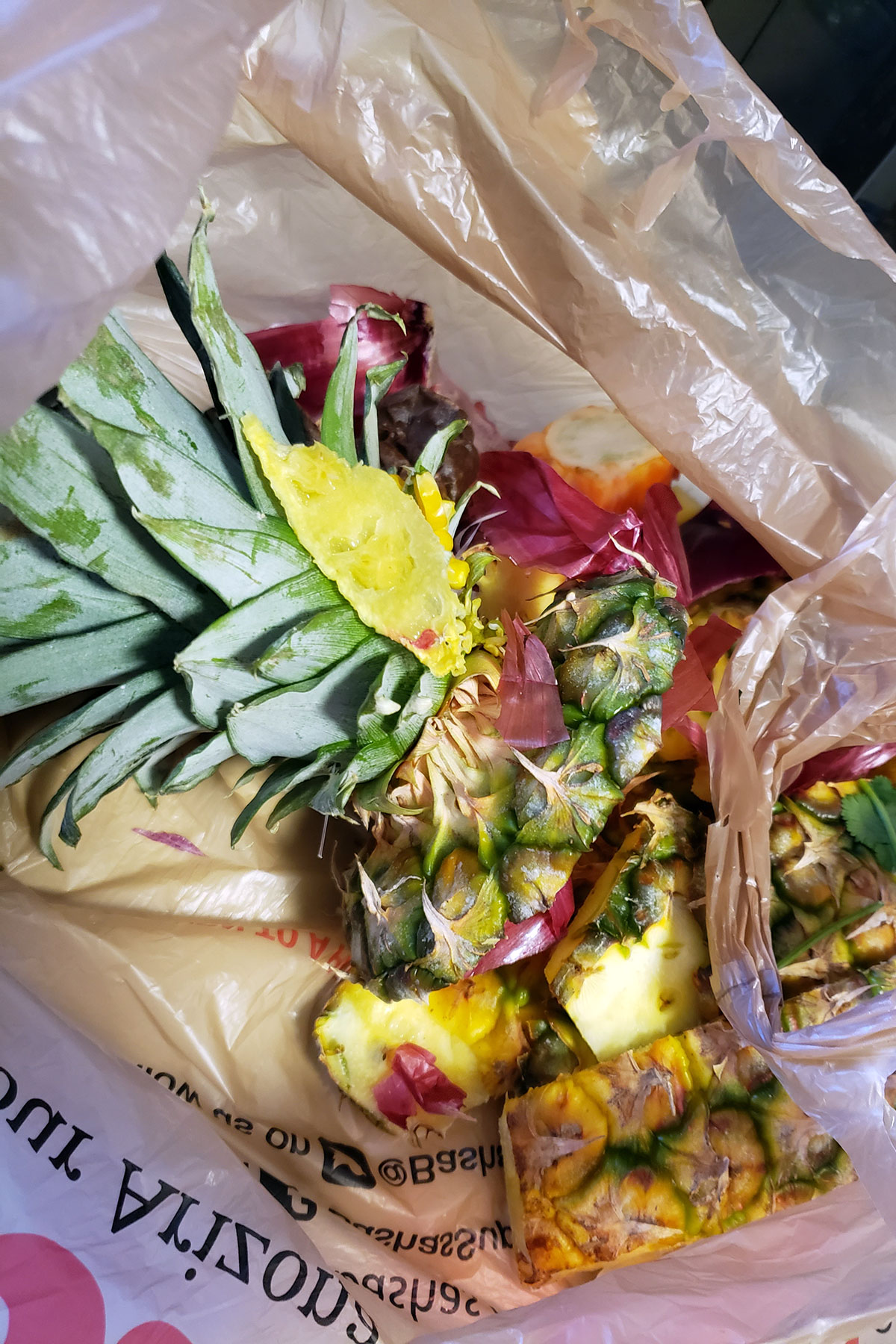If composting is not right for you, vermicomposting can be a great option for you! Vermicomposting basically means composting with worms. Vermicomposting still allows you to reduce kitchen waste, creates a great soil amendment, and provides nutrients and good microorganisms to your soil. If you have kids, they are also a great gardening project to get them involved.
Vermicomposting starts with the right type of worm. Regular earthworms found in the dirt outside are the not the best worm because they take longer to break down materials and do not like living in small spaces. Your best bet are Red Wigglers. Red wigglers reproduce fast and double in number about every two months, if given the right conditions. You can actually order red wigglers online or if you have a friend with some extra worms, you can ask for a handful. I ordered mine online and they came to my doorstep within a week.
While you are waiting for your worms, you can work on making a home for them. Red wigglers need a good home to create their compost. They like damp and dark conditions, but also need air because they breathe through their skin. There are many ways to create a worm bin and you can make it as cheap or expensive as you want. The easiest and cheapest way is to get a large dark-colored storage bin or Styrofoam ice chest with a lid. Drill many holes into the lid to allow air. Next, fill the bin with damp worm bedding. The worm bedding is not only a home for them, but also the worms actually eat the bedding alongside your kitchen scraps. Bedding includes shredded cardboard, straw, non-glossy newspapers, or peat moss. The bedding must be damp, but not overly wet. If you can imagine a damp sponge after you’ve wrung it out, it is perfect.
Next, place the worms in the bin and cover them with some bedding. Let them settle in for a week and let them get used to their new home. Now you are ready to start feeding them your kitchen scraps! You can feed the worms almost any types of kitchen scraps you would a regular compost pile. Feed them fruit and vegetable peels, crushed eggs shells, and used coffee grounds and tea. Remember, the worms like foods that are soft, cut into smaller pieces and moist. Sometimes, I run my kitchen scraps in a blender with a little water. Make sure to cover the food with the bedding to cut down on pests and to help the worms find the food.
You also need to be careful about not feeding them the wrong types of foods. Never place any oily or greasy items, animal products, milk or dairy, meat, salty food, citrus, and onions. These may be harder to breakdown, may cause a very bad odor or downright harm them.
Red wigglers can eat about half their body weight each week. This means if you have about two pounds of worms, they can eat one pound of food each week. Because they reproduce quickly, it is a good idea to check on them at least once a week to make sure they have enough food, and the bin has not dried out. You also need to add more bedding occasionally because they eat that too.
I have had my two worm bins for years now and I love having them. They make a great addition to my garden. I keep them in my garage and when I need some nutrition for my soil, I harvest the vermicompost and mix it in the soil near my plants. I even use it for my houseplants. Vermicomposting gives you all benefits of regular composting, but you use less space and can sometimes be quicker to breakdown. Have fun!
Denee Bex is a Registered Dietitian and advocate for healthy traditional diets and home-grown foods within Native American communities. She can be reached at Denee.Bex@gmail.com.






